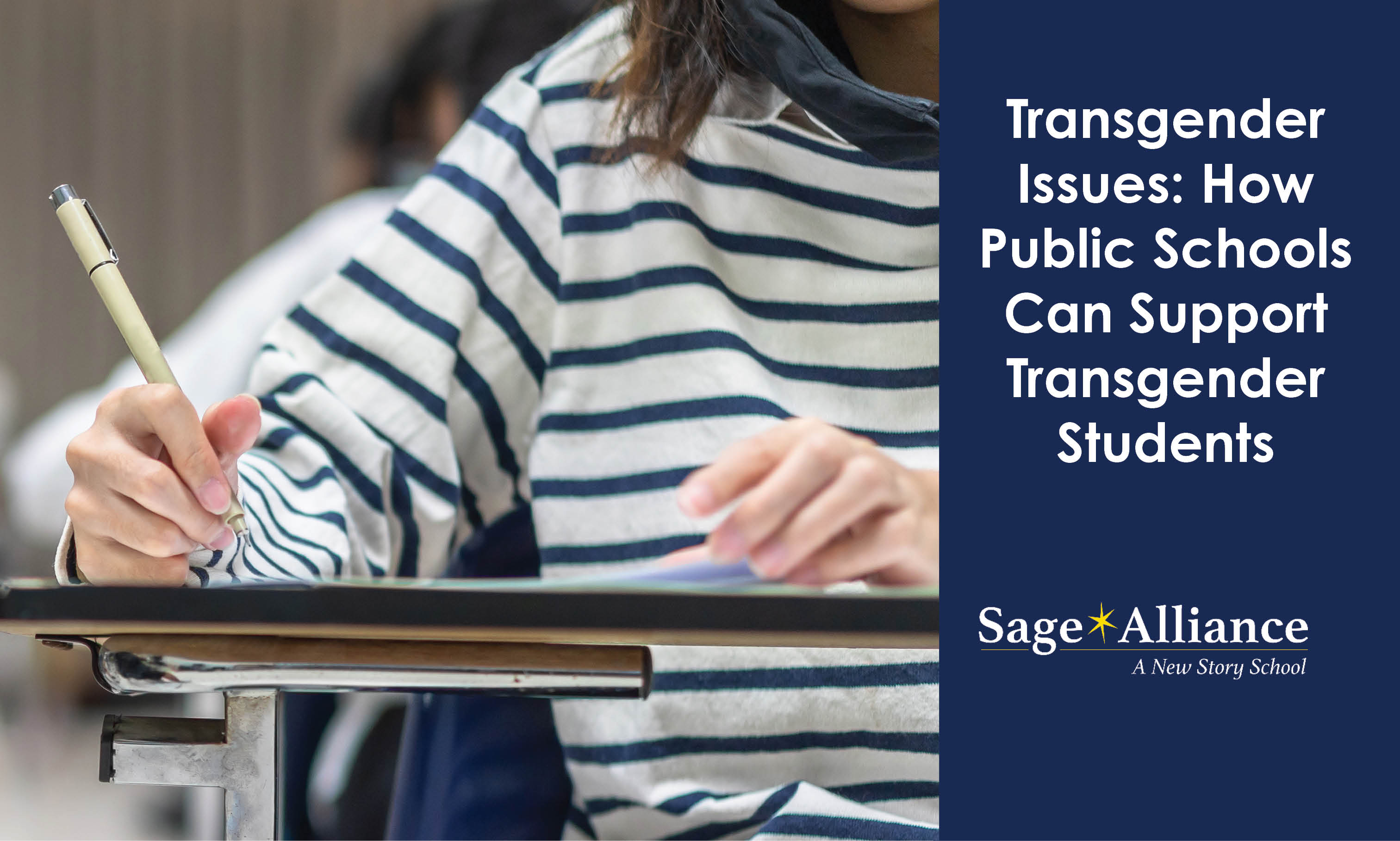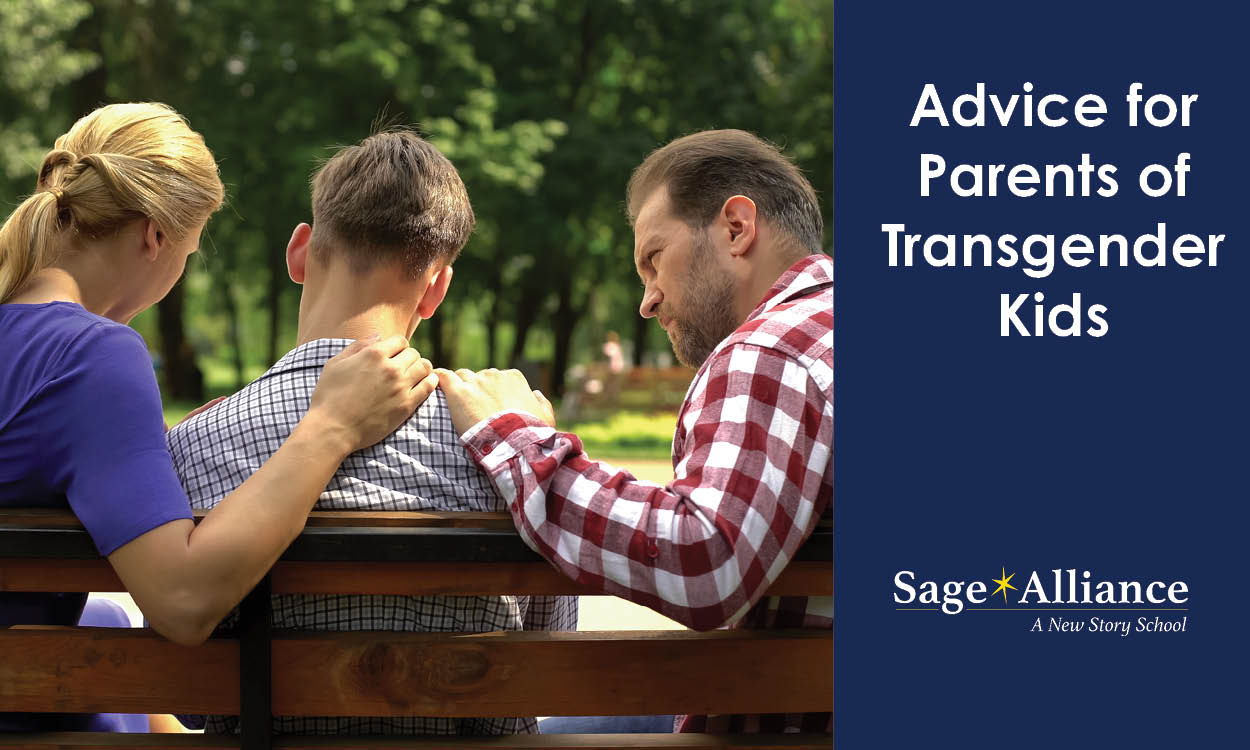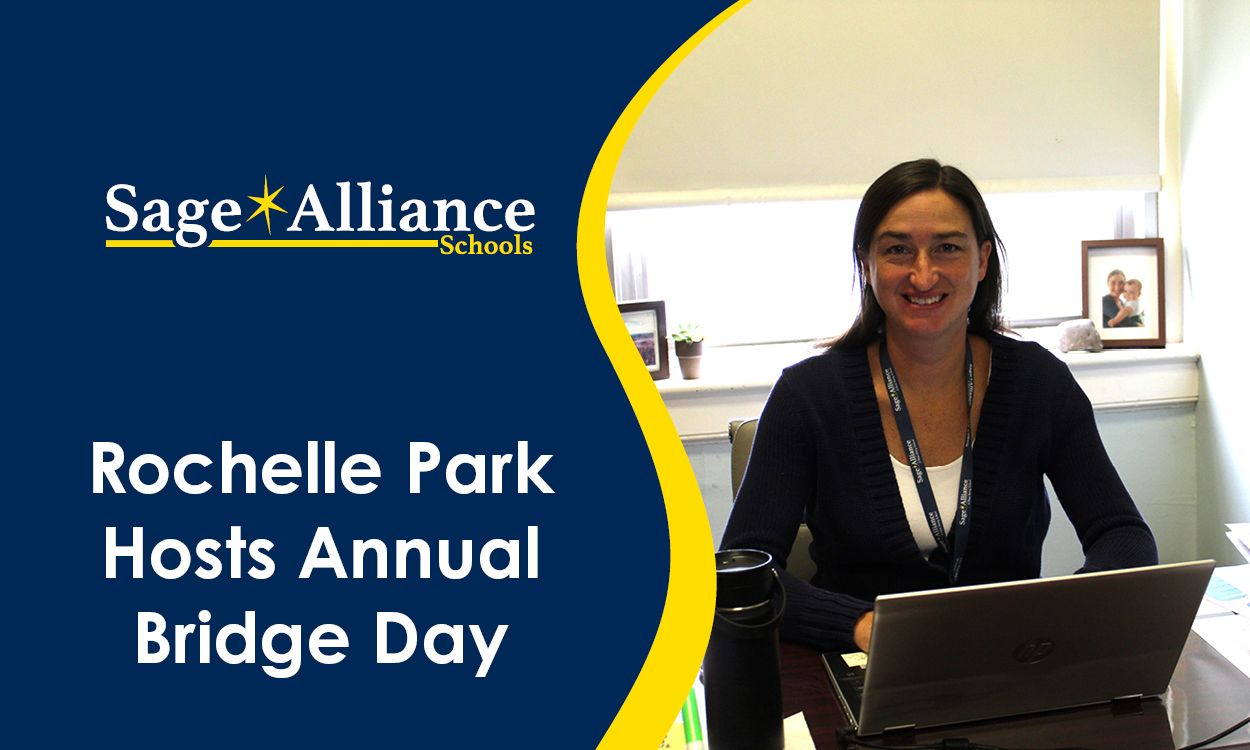Transgender Issues: How Public Schools Can Support Transgender Students
Posted: January 08, 2016 | Written By: Holly Ference | Category: Transgender

“Are the kids nice? Can I wear what I want?” “Will my child develop friendships?” These questions reflect the anxieties of almost any child or parent upon entering a new school, and they are real questions submitted by potential applicants to the Sage Day Schools, where child therapy is integrated into a small, alternative school environment geared to emotionally fragile kids. When a child is struggling with transgender identity and has developed ineffective ways of coping with the emotional challenges of a typical school environment, they may need to find a program that will help them learn how to be socially and academically successful in school.
Public schools must become better prepared to anticipate and address potential issues confronting sensitive transgender students at a time in their lives when all students are trying to find themselves. The goal is to help them create an identity that will lead them into a healthy, happy, successful school experience and future.
Parents of transgender and nonconforming youth and children face some tough choices when deciding which schools will best serve their kids’ interests. Although advances have been made in protecting the rights and safety of transgender students, variations in both state and local laws, as well as in local cultural norms may leave children exposed to less than ideal circumstances. It’s important that public schools recognize the pain and isolation inflicted on many transgender students and all those questioning their sexual identity and orientation.
Here are key areas of concern that schools should address, and signposts that parents of transgender kids should watch for when deciding on a school, whether public or private.
Safety and Academic Standards
First and foremost, schools are responsible for creating an environment that is safe and supportive by establishing and implementing an effective anti-bullying policy. Bullying and harassment of LGBT students, especially transgender students (in older grades) and non-conforming students (in younger grades), have a major impact, as illustrated in these statistics:
- Higher levels of student victimization correlate to lowered educational aspirations and lower academic achievement.1
- Close to half of the transgender youth in one study indicated that they have attempted suicide1 – a sad statistic.
- Close to 80% of transgender students report that they have experienced some type of harassment.1
- 55% of transgender students have experienced physical harassment in school in the form of pushing or shoving.2
- Nearly half of transgender students felt uncomfortable or unsafe enough to skip a day of school or a class during the month.
Policy and Legal Implications
Title IX, the federal law prohibiting school sex discrimination, also covers harassment, bullying, or discrimination against gender nonconforming or transgender students.3 In fact, public schools must protect transgender students from harassment according to legal policy at every level.
Individual states have passed specific laws, such as the California Education Code, which requires that students be protected from harassment due to gender identity or sexual orientation. Up to 160 cities have also passed laws prohibiting gender identity discrimination.4 Students are further protected under the First Amendment of the U.S. Constitution and multiple laws mandating freedom of speech. Note: schools have the right to limit some kinds of speech according to appropriateness of location and time.
Schools should establish guidelines against all forms of sexual harassment or risk legal liability and, potentially, invite oversight by the Office of Civil Rights (OCR). The risk is quite real, and the law spells out specific steps that should be followed to ensure that they are in compliance, including:
- All recipients of federal funds must adopt and publish grievance procedures for instances of sexual harassment.
- Students have the right to submit harassment complaints against fellow students or school employees to the OCR.
School districts may be held liable for failures to supervise that result in students experiencing sexual abuse, if officials are found to have shown “deliberate indifference” to a child’s welfare. The judgement of deliberate indifference can be applied if a school official meets—or, rather, fails to meet—certain criteria, including:
- Having some knowledge of abuse
- Having authority to take action
- Failing to take action to stop abuse
- An injury to a child due to failure to act
Who is liable? Supervisors may be held accountable for a subordinate’s harmful acts when they know of behavior that suggests sexual harassment and do not take any action.1
Culture and Language
School administrators and faculty are in a position to model behavior that establishes a culture of acceptance and reinforces an inclusive environment. Language is an essential component and a tool for setting the right tone. In particular, school psychologists are expected to uphold a standard and employ language that is non-discriminating, as described in the NASP Position Statement.1
Recommended language standards take their cues from transgender students themselves. Guidelines include always using the individual’s chosen name and addressing each one with the pronoun appropriate to the gender they identify with, as indicated by their gender expression and appearance, or by asking their preference, if possible. Also, use the word transgender as an adjective, not as a noun. When referring to gender identity, the preferred usage is “assigned male at birth,” or “assigned female at birth.”1
Creating opportunities to discuss these issues in the classroom is an important component in building a welcoming environment. Students learn empathy through understanding of transgender students, who in turn are enabled to develop greater self-esteem.
How to Create a Welcoming Environment
Take steps to build a welcoming environment for all children by involving all community members. Include parents, educators, and advocacy or support groups. Parents and public schools can look for models of successful programs to private institutions, like Sage Day Middle School in Mahwah, NJ, where children in grades 4 – 8 find an open, non-judgmental environment, following most of the recommendations below, and more.
Here is a checklist of steps to consider:
- Use inclusive language consistently; for example, when addressing a group, refer to the class or to “everyone,” rather than specifying “boys and girls.”
- Avoid breaking into groups according to gender; instead, opt to group kids alphabetically by last name, favorite colors, or other inventive ideas.
- Provide children’s books and posters that include nonstereotyped characters. There are many available that illustrate transgender and nonconforming children of varied races.
- Use a professional development approach to prepare staff for all possible needs surrounding gender variant children. Provide guidance in advance so teachers will know how to incorporate policy into everyday settings, from lesson plans to classroom language, and for record-keeping and schoolyard monitoring.
- Provide clearly outlined policy materials in the form of a handbook or guidelines that instruct teachers in appropriate ways to handle all possible issues around transgender students. Prepare staff for handling bathroom use, after-school activities like sports, how to use pronouns and children’s names, and handling confidentiality issues, including student records. Each transgender student’s record should indicate their preferred name and gender identity, but steps should be taken to remove such private information from classroom documents such as rosters.
- Offer support groups for students like the Gay Straight Alliance Network (GSA), which involves students who identify as any gender or sexual orientation, including those who are transgender, bisexual, questioning, or heterosexual.
- Provide psychotherapeutic assistance to help students work through transgender issues, as well as supportive therapy for families and support groups.
- Establish lines of communication so that students know who to approach for help when they feel harassed, intimidated, or threatened due to their gender identity. Prepare staff and administrators to quickly follow up on any such incidents.
Contact an Admissions counselor at any of our four Sage Day campuses, to learn more about our programs, and whether one of our therapeutic schools is the right fit for your child in middle or high school.
Sources:
1. EducationAdminWebAdvisor. “Transgender Students in K-12: Navigating Accommodations and Avoiding Litigation.” Cino, Jessica Gabel, Esq., Presenter. DKG Media, LP. 2015. http://www.educationadminwebadvisor.com/schedule/detail/Transgender-Students-in-K-12–Navigating-Accommodations
2. http://www.adl.org/education-outreach/curriculum-resources/c/discussing-transgender-and-gender-non-conforming-identity-and-issues.html?referrer=https://www.google.com/#.VkT5Q7erRhE
3. http://www.transequality.org/know-your-rights/schools
4. http://www.cnn.com/2014/10/03/living/children-gender-inclusive-schools/
5. http://www.lambdalegal.org/know-your-rights/youth/tgnc-friendly-schools
Want to be notified of new articles and resources from Sage Alliance? Click here to submit your email and opt into our newsletter.








